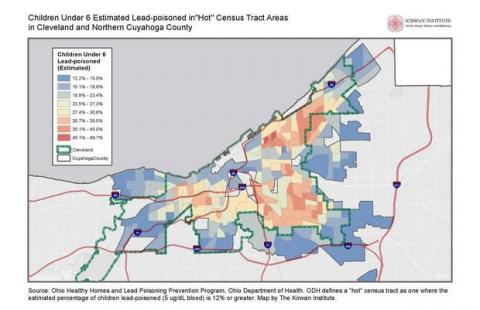Contact Us
Program Director
Marilyn (Lynn) Lotas, PhD, RN, FAAN
Associate Professor
Co-Director
Marguerite (Peg) DiMarco, PhD, RN, CPNP, FAAN
Associate Professor
A Critical Public Health Problem
Lead poisoning is a critical public health problem for Cleveland’s children. Consider
- Cleveland has one of the highest percentage of children with elevated lead levels in the United States.
- Cleveland has higher lead levels than Flint, Mich., whose own lead problem sparked national coverage and outrage. Flint reported that 7 to 10 percent of their children had elevated lead levels; Cleveland has an average of 12 to 13 percent of children with elevated lead levels, with some neighborhoods seeing rates as high as 25 percent.
- Cleveland has a low screening rate.
- The latest data shows that only about 35 percent of Cleveland’s children are tested for lead levels, and not all of those who test positive are treated.
- Cleveland has an aging housing stock.
- About 90 percent of Cleveland’s housing supply was built before 1978, when lead paint was banned in consumer applications. These houses may still have leaded paint in the home.
- Research has shown that every $1 spent on screening and treatment will save $7 in public health costs down the line.
- The Centers for Disease Control has found that, while no level of lead is safe, 5 micrograms of lead per deciliter is associated with lower IQ levels and poorer school performance. CMSD children have been identified with lead levels of up to 70 mcg/dl.
The lead poisoning epidemic is a serious public health issue that has gone unchecked for far too long. With what we now know about the effects of lead poisoning, it is imperative that action is taken immediately to ensure that children are no longer being unknowingly poisoned in their own home.


